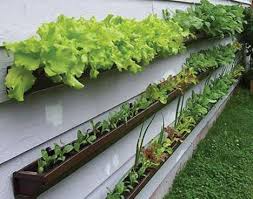Container Gardening and Vertical Gardening in Large and Small Containers
If you want to eat healthy and save money, then container gardening is a viable solution. This means vegetable and herb growth assists you in yielding a more successful crop, is less time consuming than traditional gardening and it ensures you always have food.
Opting to start a container garden sooner rather than later is beneficial, as it allows you the opportunity to learn and gain experience so that if a life crisis were to arise, you would have the knowledge to provide sustenance to yourself and your loved ones.
Survival Basics
Growing a garden in a container has some similarities to planting a field of produce, as you have to consider the amount of space available, the soil content and the local climate. However, in the event you need to accumulate food in an emergency, you are going to have to work with the soil, containers and tools nature is providing.
If your intent on learning gardening in containers (and use in survival situations), then it’s best you keep things simple and just understand the basics-container, dirt, water and of course, seeds.
The Container
The ideal container for growing crops is one made of natural materials, such as wood baskets, metal buckets or clay pots so that no toxins leach into the soil, thereby making their way into your vegetation. In the event of a crisis, you may be able to grab these items from your yard or you may need to re-establish yourself and make do with food containers, plastic bags or pots and rubber receptacles. It is quite possible you may even have to grow your food in all of these types of containers, as keeping a garden for survival purposes requires many pots.
Aside from material, size and the ability to drain are the most important factors to consider when looking for containers. If you intend to plant foods with large roots or grow multiple produce in one container, you need it to be wider and deeper than a pot you would use to grow herbs or vegetables with smaller tentacles. Additionally, your containers need to have the ability to drain excess water so as to avoid oversaturating the roots and drowning your vegetation.
Vegetation
Container gardening, while simple and beneficial, does have its limits, as you cannot confine all vegetables, and certainly most fruits, to such a small, shallow space. Still, you can grow a decent variety of fresh vegetables and herbs, including:
- Carrots
- Peppers
- Cucumber
- Radishes
- Tomatoes
- Beets
- Parsley
- Eggplant
- Green Beans
- Leafy Greens
You may also opt to grow rosemary, basil, sage, potatoes, thyme, onions, broccoli or squash if you choose to pursue a container type of gardening.
Container Gardening Tips

Depending on the climate in which you are growing produce, you may have to find a water source so you can grow a successful crop. If you are in an area that experiences cold winters, you need to shield your garden as best you can by gradually allowing the herbs and vegetables to adapt to an indoor climate, starting in the early fall. It is also important to prune, or trim, the vegetation so you can avoid the spread of dead or diseased leaves, thus allowing your food to grow healthy.
Container and vertical gardening, whether indoors or out, requires the same care, as bugs, plant diseases, temperature and lighting can destroy your food source. You should also be aware of which vegetables might require stakes or caging because if you do not grow your crops correctly, then you are wasting time and running out of food.
Succession planting is another means of creating as much food as possible and if you are relying on a container garden for survival purposes, then you should master the art of growing and harvesting healthy vegetables and herbs.
Return from Container Gardening to Backyard Farming






New! Comments
Have your say about what you just read! Leave me a comment in the box below.